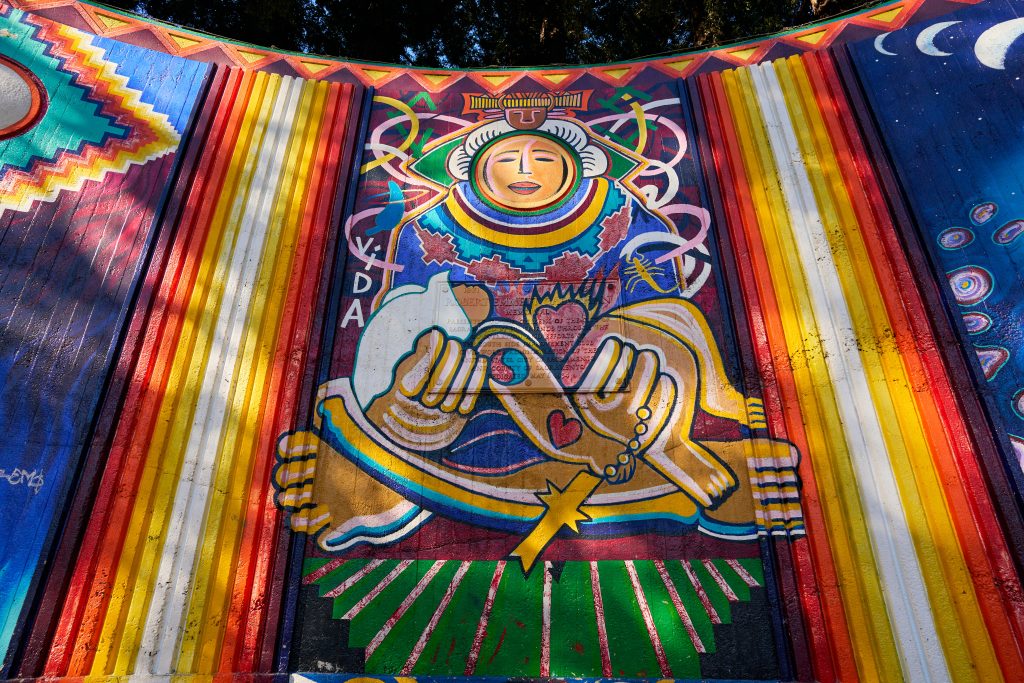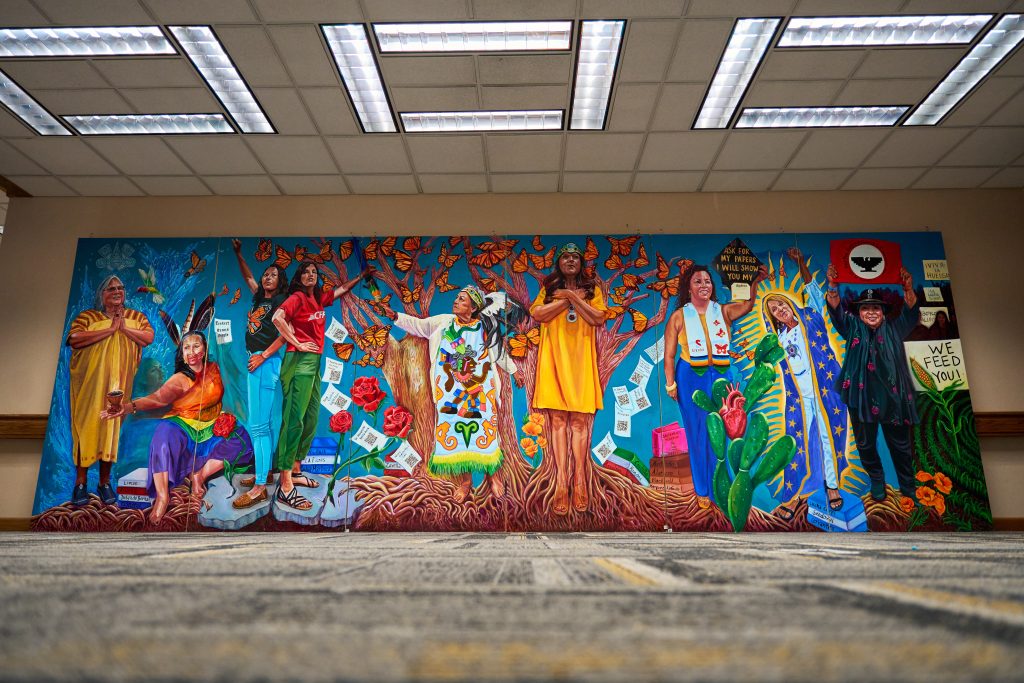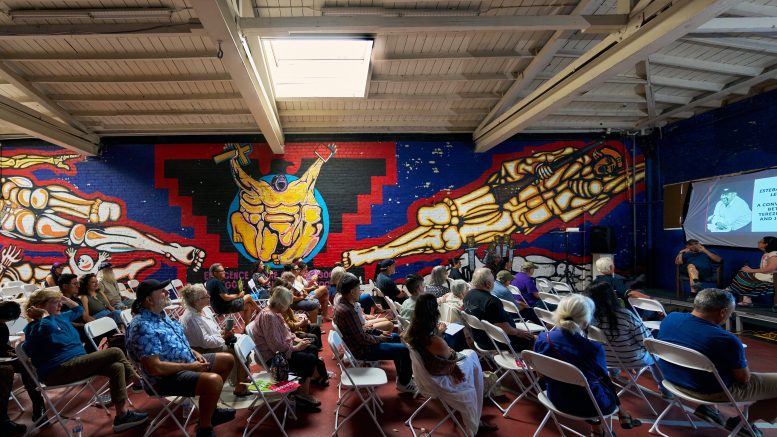By Marie-Elena Schembri
From the lasting legacy of the Royal Chicano Air Force murals to more recent works honoring powerful women, Chicano murals in Sacramento serve as powerful expressions of cultural identity that celebrate the historical contributions of Chicano and Latino artists and activists.
Royal Chicano Air Force
The Royal Chicano Air Force (RCAF) political activist group emerged during the broader Chicano Movement of the 1960s and ’70s. Co-founded by Sacramento State art professors Esteban Villa and José Montoya and their students, including Juanishi Orosco, the group (originally called Rebel Chicano Art Front) created political art, including murals and screen-printed posters speaking to the identity, culture and struggles of Mexican-Americans.
One of Villa’s most notable works is his Washington Neighborhood Center mural “Emergence of the Chicano Social Struggle in a Bi-Cultural Society,” created between 1969-1970 and considered to be both the oldest Chicano mural in Sacramento and the first mural to include the word Chicano, according to art historian, UC Davis professor and RCAF member Terezita Romo.
Romo was one of several speakers at a Sept. 28 symposium held at the center to recognize the impacts of both Villa’s mural and the legacy of RCAF.

Nude, skeletal figures emerge from the mural in Villa’s graphic style and color palette of primary hues accented by pink, white, orange and black. One skeleton figure clutches a book in one hand and a cross in the other, while its body seems ready to burst from the wall as it cries out with a wide-open mouth. The Aztec eagle symbol used by the United Farm Workers movement is painted in the background.
Another figure holds a book that reads “The Principles of Education,” and “Atzlan,” and a mother is giving birth below with a young child looking on. A Brown Beret soldier with a rifle hovers over daggers, highlighting the tensions of Mexican Americans while also speaking to the community’s resilience and drive for change.
Like Villa’s “Emergence” mural, Orosco incorporated symbolism and bold color in his murals, including indigenous motifs and references. One of his Southside Park mural panels includes the vibrant “Ojo de Dios” (eye of God) symbol that originated with the Huichol people of Mexico — a talisman for prayers of good luck and protection.
Orosco’s second panel in the mural depicts a pregnant female figure uplifting the sun, emerging from a pre-Columbian warrior figure, representing spirituality and the potent future. A young modern Chicano couple represents a way forward, with the woman holding a crystal to represent peace and the young man wearing a political T-shirt.
Powerful women

The traveling Poderosas Mural Project highlights the cultural impacts of activism and art in the Chicano and Latino communities, focusing specifically on the powerful women – poderosas – who are carrying the torch of activism and education in their communities.
It features portraits of nine women, from political lobbyists to educators and dancers, and instills pride in the community while honoring “our local women who are social justice activists working every day to do this work,” according to organizer and Sacramento City College Dean Emeritus Rhonda Rios Kravitz.
Led by artists Ruby Chacón and Isabel Martínez, the mural depicts each woman in her element joyfully dancing or holding up a fist in solidarity and resistance amid cultural symbols like the hummingbird, butterflies, cactus and the UFW eagle. Filled with motion and rich colors, the mural incites a feeling of celebration for the lives of these everyday heroes. The mural is currently on display at Sacramento City College’s Learning Resource Center.
This story is part of the Solving Sacramento journalism collaborative. Solving Sacramento is supported by funding from the James Irvine Foundation and the James B. McClatchy Foundation. Our partners include California Groundbreakers, Capital Public Radio, Outword, Russian America Media, Sacramento Business Journal, Sacramento News & Review, Sacramento Observer and Univision 19. Sign up for our monthly newsletter.


Be the first to comment on "The rich cultural history of Sacramento’s Chicano murals"